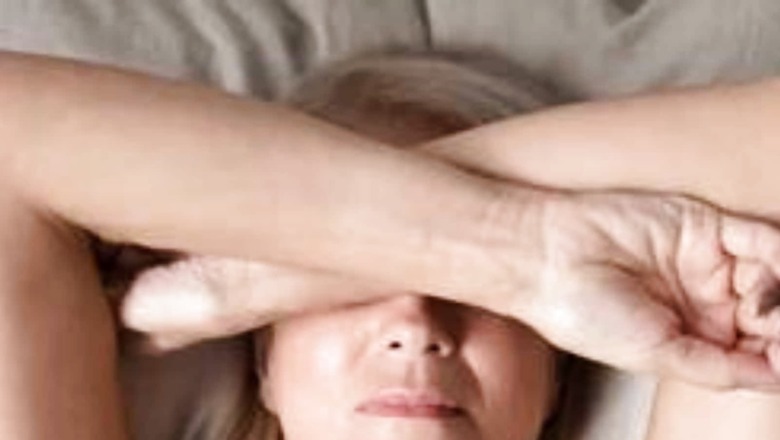
views
The menopausal transition is a normal part of ageing for women. According to the National Institute of Aging, it is a point in time 12 months post a woman’s last period.
The time frame leading up to menopause when women experience hot flashes, and changes in the monthly cycle, is called perimenopause.
Some women have no trouble with menopausal symptoms and feel relieved as they will not have to worry about periods or pregnancy.
But for other women, menopausal transition means – hot flashes, trouble sleeping, painful sex, irritation, mood swings, and depression. Some seek medical attention to treat their symptoms and make the transition easier.
The menopausal transition often begins between the ages of 45-55. The body undergoes changes as well.
It begins to use energy differently, fat cells change, and women might gain weight easily. Your bone or heart health, body shape and composition, and physical function may change.
During perimenopause, the production of estrogen and progesterone hormones made by the ovaries changes, and it varies from person to person. Estrogen hormone protects and defends the strength of the bone.
Lack of estrogen when combined with other factors contributes to the development of osteoporosis.
If you develop osteoporosis, your bones begin to weaken, and the number of holes in the inner part of your bone increases and grows larger. This causes the internal structure of the bone to weaken and get brittle.
Other important risk factors for postmenopausal osteoporosis include –
Age – Till the age of 30, our body creates more bone than we lose. After 30, bone deterioration occurs more rapidly than bone creation. This leads to a gradual loss of bone mass.
Genetics – If your family member had osteoporosis, you may be at a greater risk of developing osteoporosis.
Smoking – Smoking increases the risk for osteoporosis. It speeds up the onset of menopause which means there’s less time for your bones to be protected by estrogen.
Existing bone density, ethnicity, body composition, etc.
By evaluating these risk factors doctors identify patients for osteoporosis screening and recommend them nonpharmacologic measures such as good nutrition (especially sufficient intake of protein, calcium, and vitamin D), regular exercise, avoiding smoking, and reducing alcohol intake. These are appropriate for all postmenopausal women.
Read all the Latest News and Breaking News here


















Comments
0 comment